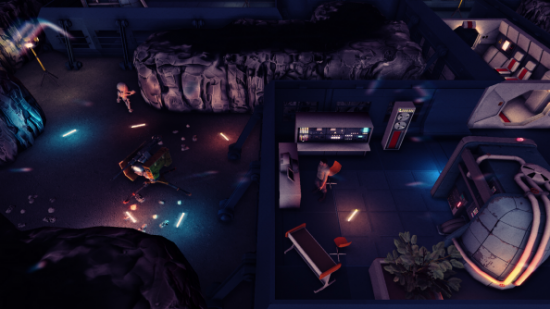After many months of quiet development, creator Simon Roth is slowly beginning to tease details of this (deep breath) subterranean space colony management game. Maia was originally a solo side-project while Roth worked at Mode 7, developers of Frozen Synapse, but that didn’t mean it was modest in either its scope or its ambition. Roth, who is particularly skilled when it comes to building game engines, wants to make an indie game with graphics to rival any triple-A title, with realistic fluid and atmosphere simulation, and featuring playing areas that are 2km square.
It’s
all looking very pretty, too, and while Roth has kept many of the finer
details of his work under wraps, he wants to create a complex,
procedurally-generated management game with many intricate and
interdependent systems. As you dig out space for your colonists, you’ll
be worrying about hostile alien creatures, the mood of your colonists,
the condition of your air supply and the occasional unexpected lava
flow. The latter has given Roth more than his fair share of
head-scratching, as a realistic modelling of the movement and flow of
liquids, still a rarity in games, has been just one of his concerns.
Lighting
will also play a significant role in the game, even down to the colour
used, which can affect the temperament of those working in its glare.
Red lights, for example, raise aggression but also productivity, while a
cool blue calms and relaxes people. In addition to colonists, players
will also employ IMP robots, bipolar androids with an acronym that Roth
says he’s now forgotten the meaning of.
Roth
is now working on Maia full time and has begun to employ musicians and
modellers to help bring the game to life. Two weeks ago, he won the Indie Developer Grant
and he’s now investigating crowdfunding options, with the intention of
opening up funding next month and launching an alpha in January.
As well his work in games development, Roth has also become known for his outspoken views on developer’s rights. His list of games that no longer support their creators
was widely circulated earlier this year and in a recent interview with
Ars Technica he spoke at length about the royalties that game developers
receive or, in many cases, often don’t. His intention was in part, he
said, to dispel the myth that it’s a “magical wonderland where everyone is rich and plays video games all day.”
While
many of Maia’s details are still known only to Roth, I was able to
speak with him about the origins of his game, how the project is
progressing and what he plans to do next.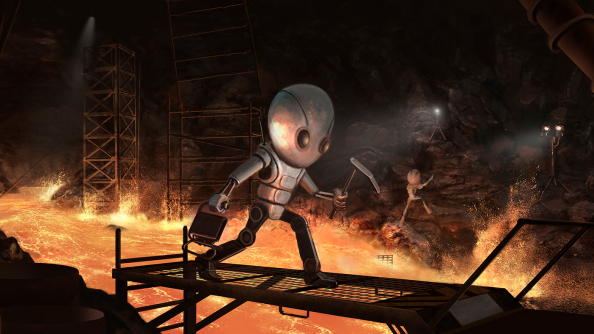
PCGN: So, first of all, what is Maia exactly? It’s a mix of Dungeon Keeper, science fiction, The Sims and some other elements, right?
SR: I
never know how to pitch the game! It’s a space colony management sim.
It doesn’t fit into any of the standard molds. It’s The Sims, with heavy
Dwarf Fortress influences and the interface of Dungeon Keeper, set in a
70’s science fiction universe with a very dark sense of humour.
PCGN: Where did the idea for the game come from and what are your inspirations, games or otherwise?
SR: The
initial idea came to me whilst I was working on VVVVVV. My side project
at the time, a surreal horror game set in a strange procedural world,
was dragging on and going nowhere. It had some great voxel tech, but I
was struggling to see the game in it.
After
a painfully long day fixing bugs on VVVVVV with Terry, we went to an
indie meet up in the pub. Chris from Introversion turned up and also
Charlie Knight. One of the conversations that stuck in my mind was
Charlie talking about the importance of being immediately able to see a
game from it’s concept. Little did I know Chris had, or was about to,
ditch Subversion for Prison Architect for that very reason!
I
started from scratch and began designing something else to use the
systems I had made; an idea I’d dropped long before during my bachelors
in favour of making a game engine. I had several sleepless nights
constantly thinking of the game, which later became known as Maia.
Eventually,
after finding myself wasting too much time on the technology, I dropped
the fancy voxel world and started from scratch. I distilled the idea
down to a block based layout, much like Dungeon Keeper’s. I sent a few
screenshots to friends and explained the game. Their excitement about it
was immediately obvious and I knew I’d settled on the right path.
In
terms of inspiration, games have only been a very small part of it.
While I’m taking a few mechanical things from games like Dungeon keeper
and the 90’s simulation genre, I’m avoiding being too influenced by
them.
A
lot of my ideas come from literature. Philip K. Dick’s dark influence
will infect the game throughout, along with the hard science fiction and
smart humour of Asimov and Arthur C. Clarke. Douglas Adams’ words have,
of course, had a large role to play too. I’m
also pulling a lot from 1970’s cinema, in particular the brilliant
sci-fi epics of the decade. Kubric’s adaptation of 2001, Scott’s Alien
and Trumbull’s lesser known Silent Running are all massive inspirations. Space
1999’s first series is my first stop when I need to get into the right
mindset for design work on Maia. Gerry Anderson is a genius and 1999 is
arguably the best TV sci-fi ever made.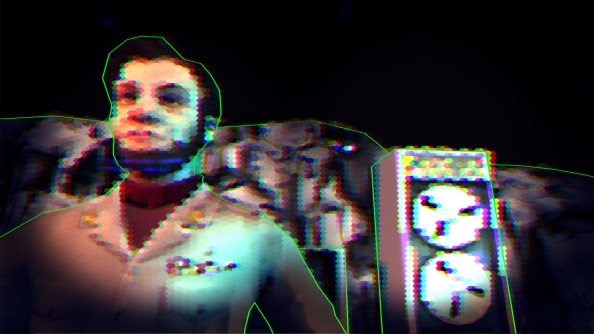
PCGN: And what will we see in Maia that we won’t see in other games? What’ve you got to show off?
SR: One
of the things I’m most proud about is the visual aesthetic I’ve nailed.
I find a lot of 3D indie and AAA games fail to deliver on the art
front. All the graphics tech in the world won’t save you if you don’t
have a unified style and coherence.
The
lighting system is definitely something you won’t see in many indie
games. Especially having so many interactive light sources having direct
a effect on game-play certainly isn’t something I’ve seen other people
do.
PCGN:
What’s the state of the game right now? How far along are you and what
sort of things are you working on? How big is the Maia “team”?
SR: The
game is coming along great! We are currently in a state of
pseudo-crunch in a push to up the quality of the core experience. A lot
of the rough content for the early media releases is being stripped and
replaced with polished work.
With
the engine mostly there and basic game systems in, I am working on
adding the user interaction and connecting things, to transform it from
an interesting simulation into a playable sandbox. Seeing the IMP’s
running about, digging out rooms, building things and occasionally
throwing a huff is great to see, even if the animations aren’t quite
there yet. I finally have it in a place where you can sit down and
properly play with it.
The
core team is still only me, but in total eight people have contributed
on a freelance basis so far. I’m hoping with funding I can permanently
employ a core team to speed the turnaround on content. It’s difficult to
let people in on a very personal project, but more hands on deck can
significantly catalyse development for me.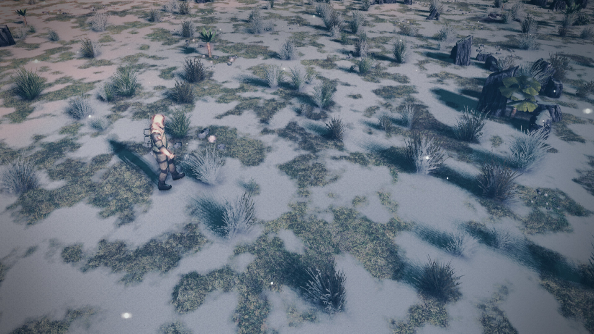
PCGN: Is there anything you’re hiding, any secrets to be revealed at a later date?
SR: Plenty!
I’m very open about the core game, but I am saving plenty of things in
the design for the final release. There are a lot of surprises to be
found via research and by excavating that will hopefully add long-term
appeal to the game-play. Not to mention the many rare events that will
keep players guessing.
PCGN: You recently won the Indie Grant. Congratulations. How did that come about and what has it done for you?
SR: I
heard about the grant randomly on Twitter. I didn’t have high hopes for
winning, several of the other games were already finished or had fancy
game play trailers. I had no idea my community would absolutely
steamroll the voting.
Although
it’s a fairly modest amount, all funding at this stage is very welcome
as I am currently burning my own funds to get things done. The “no
strings” nature of the grant is especially important to me, as I am
loathe to let financial pressure dictate the design.
PCGN:
If you’re now working full time on the game, how has this changed
things? How does this compare to other games you’ve worked on in the
past?
SR: Working
full time on the game really helps to maintain focus, although it ups
the ante somewhat. The pressure of handling everything at once can be
stressful, but ultimately far more rewarding than being given a specific
domain to work in. It gives me room to procrastinate on one taxing task
whilst still moving forward with something else on the game. Being able
to switch from art, to code, to marketing, or production lets me stay
fresh creatively and keep different parts of my mind suitably engaged.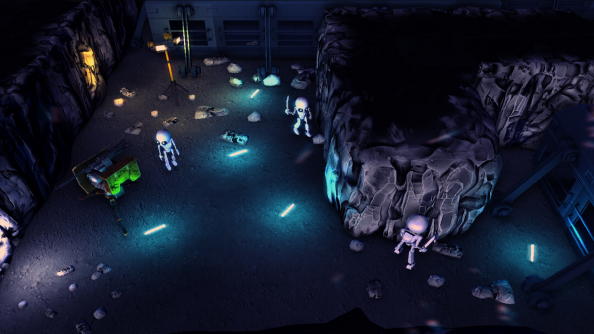
PCGN: What kind of response is Maia getting and what’s it like managing this?
SR: It’s
been rather mind-blowing. When I post a test video and it gets twenty
thousand hits and lands the front pages of the biggest games sites on
the net, it’s a massive morale boost to everyone working on the game.
The
community is great, but very splintered and disparate. The game is many
things to many people and I find myself occasionally gently lowering
expectations. At the heart of it, I’m really only making the game for
myself. Luckily, I have impeccable taste!
I
am surprised at how so many people immediately click with the concept.
4chan /v/ were the first large group I engaged with, and I was
overwhelmed by the response, I posted a thread and it went on for hours.
I still get emails of encouragement from them. It’s surprisingly
touching.
PCGN:
You’ve been somewhat outspoken on the past about a few different
things. What lead you to speak up about these? Do you worry that it
might bring you into conflict with publishers or members of the video
games industry?
SR: The
industry is a mess of cognitive dissonance, old fashioned thinking and
plain stupidity. I’ve burned a few bridges, nuked a couple from orbit
(it’s the only way to be sure), but I don’t think it will ever be an
issue. My curiosity leads me down new paths every day.
I’ve
been told the head of a few studios called me very rude names in
private, but if anything, that reflects badly on them. I think being
frank, honest, respecting people over money, and having severe allergic
reaction to bullshit has helped me endlessly.
It’s
a good way to build a name for yourself, have people respect you and
what you have to say. What’s more, being the devil’s advocate is
delightful fun. Hopefully people don’t find me too caustic.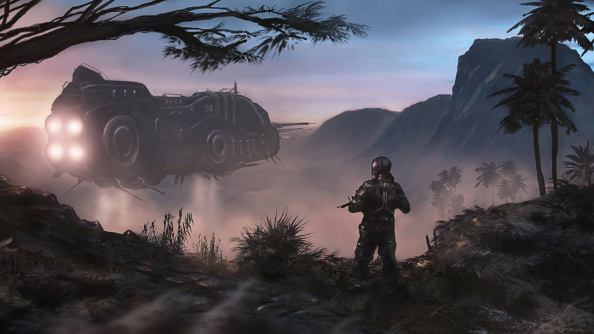
PCGN:
Well, I don’t. So, you’ve said that we can hope to see an early version
of Maia in January. Will it be a paid alpha, and if so, how will we pay
for it?
SR: I’m
currently aiming to get some sort of early alpha out early in the new
year on some big distributors. What it will be at that point isn’t fixed
and depends on funding and a few other factors. It will definitely
provide the basis of the sandbox experience with a few fun toys to try
out.
Before
that, I hope to do some crowd funding or some sort of Alpha pre-order
to raise funds and to stop people threatening me with money. Expect
something big at the end of the month!
PCGN: And finally, what’s the best type of alien ever?
SR: Kevin Spacey.
